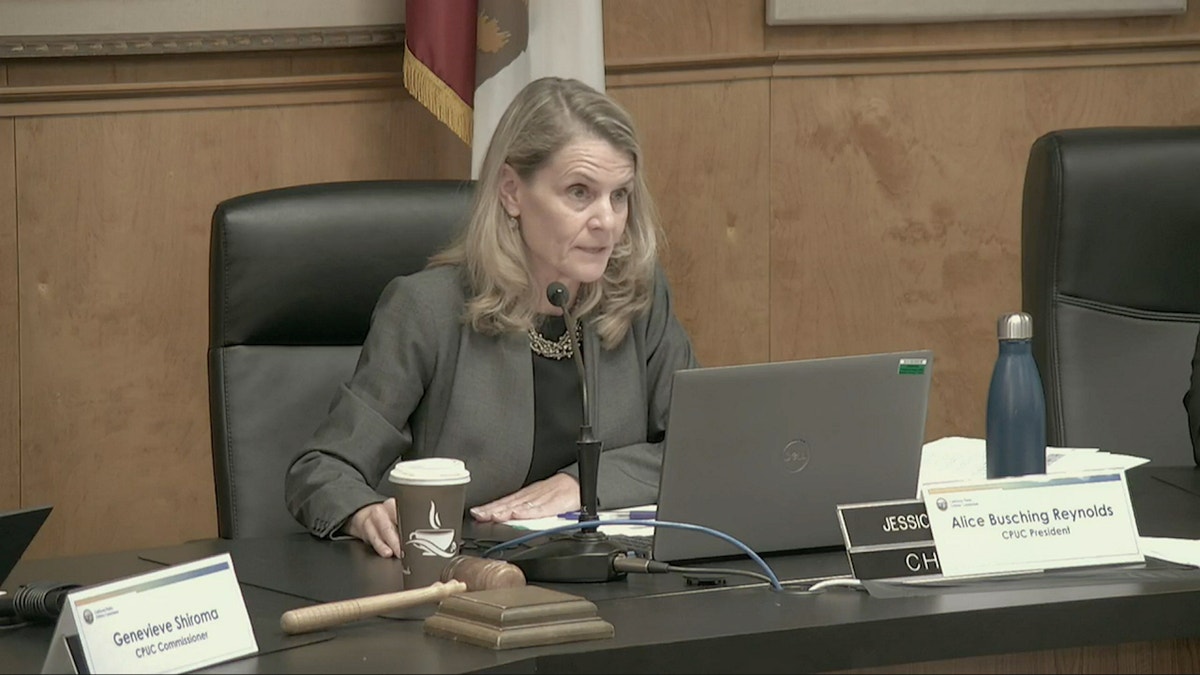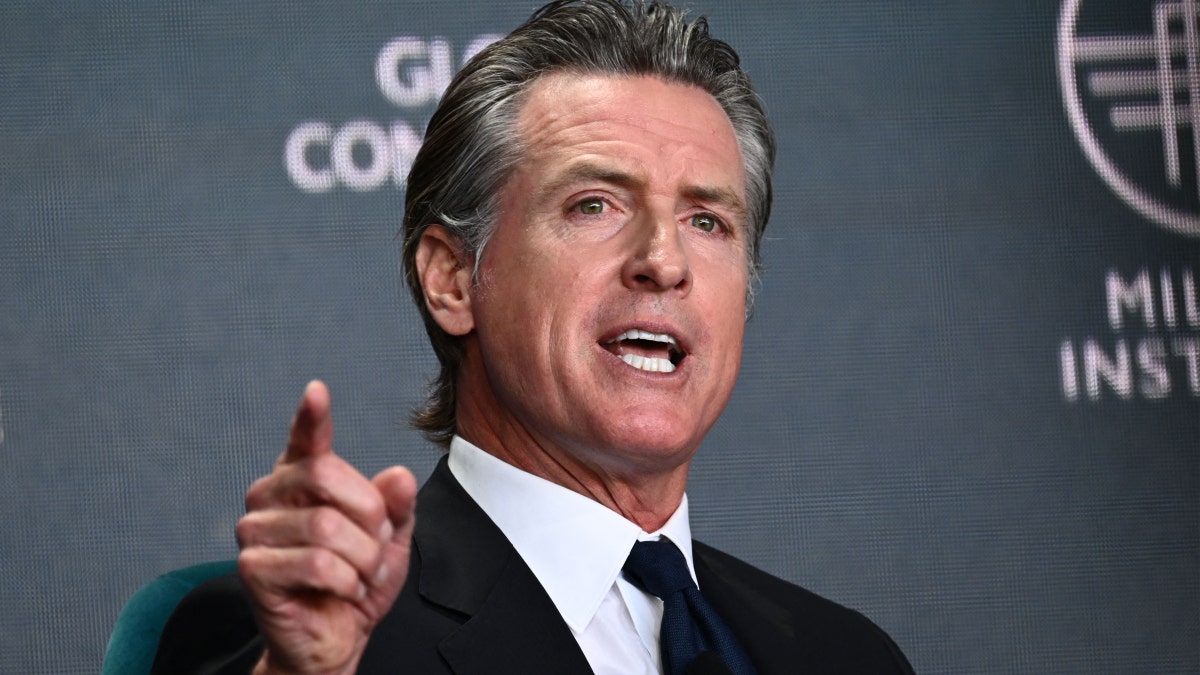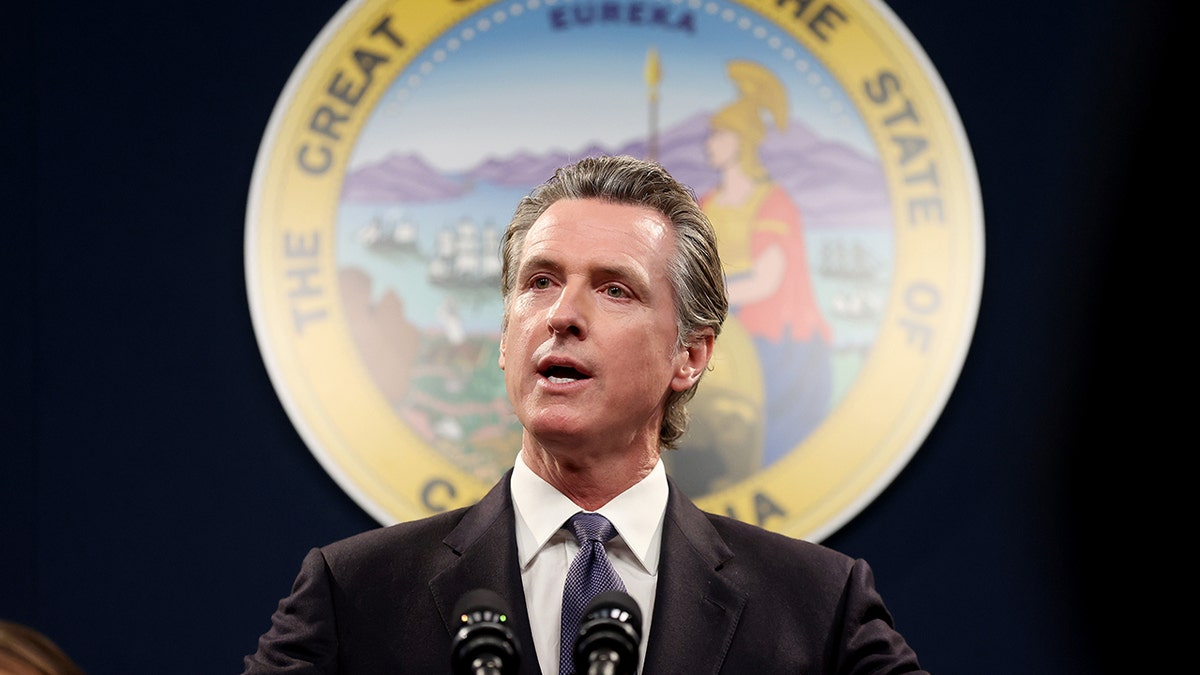Biden's energy secretary met with Chinese official before 2021 oil reserve release
Chicago-based JKC Trucking VP Mike Kucharski, mother of three Jamaica Bonvillian and Black Market BBQ food truck owner Jon German joined 'Fox & Friends First' to discuss the exclusive report and how soaring gas prices have impacted them overall.
California's top state regulator that oversees utilities approved a plan to expand a controversial fossil fuel facility that Democratic Gov. Gavin Newsom has vowed to shut down.
The five-member California Public Utilities Commission (CPUC) voted unanimously late Thursday to increase inventory capacity at the Aliso Canyon Natural Gas Storage Facility in Los Angeles County, the agency announced.
Under the new rules, the facility, managed by Southern California Gas Company, would increase capacity 67% to the state safety limit of 68.6 billion cubic feet.
While CPUC members and state officials reaffirmed their commitment to a broader green energy transition and to eventually shutter the facility, they explained Thursday's decision was made "as a financial hedge against potential high winter market prices."
CALIFORNIA RELYING ON FOSSIL FUELS FOR CRITICAL POWER AMID RECORD HEAT WAVE: 'WE NEED NATURAL GAS'

California Public Utilities Commission President Alice Reynolds speaks prior to the vote on the Aliso Canyon proposal Thursday. (California Public Utilities Commission)
The move could also save consumers in southern California up to $450 million on natural gas this winter.
"I want to note that this decision is being considered while we, together with other state agencies, are working with urgency on the challenge of reducing reliance on natural gas throughout the state," CPUC President Alice Reynolds said before the vote. "We do have some policy level levers that we're using on our work to transition away from natural gas.
"Climate change is bringing many unpredictable and extreme weather events. This decision will help us be more resilient to those impacts," Reynolds added. "But we are working in the transition, and we have to take into account the real-world conditions we're facing and the real-world impacts of our actions. We currently have few alternatives, especially for low-income and vulnerable communities."
Days prior to the vote, CPUC issued a ruling outlining steps for the commission to publish a plan for reducing the state’s reliance on Aliso Canyon. The plan is expected to be released in early 2024.

California Gov. Gavin Newsom speaks during the Milken Institute Global Conference in Beverly Hills, Calif., May 2, 2023. (Patrick T. Fallon/AFP via Getty Images)
Weeks earlier, on Aug. 10, CPUC adopted a $71 million settlement between SoCalGas, the CPUC’s Safety and Enforcement Division and the Public Advocates Office related to a 2015 methane leak at the Aliso Canyon site.
In response to the leak, Democratic lawmakers and environmental groups have called for the facility to be shuttered and for the state to reduce reliance on fossil fuels. On Aug. 17, a coalition of more than 50 organizations sent a letter to Newsom, demanding his administration reject the Aliso Canyon expansion.
"Aliso Canyon poses a significant danger to the health and safety of our communities and is entirely unnecessary," said Andrea Vega, Food & Water Watch's Southern California organizer. "Increasing storage at Aliso Canyon is intended to further enrich SoCalGas executives, not to reduce rates for our community members."
The letter noted Newsom's past pledges to shut down the facility. In 2018, Newsom made a campaign promise to close Aliso Canyon, saying he was "fully committed" to doing so. After taking office months later, he took steps to close the facility.

Democratic California Gov. Gavin Newsom pledged during his gubernatorial campaign to shut the Aliso Canyon facility down. (Justin Sullivan/Getty Images)
CLICK HERE TO GET THE FOX NEWS APP
"The governor continues to call on the commission to expedite the closure of Aliso Canyon," Erin Mellon, a spokesperson for Newsom, told Fox News Digital. "And as the governor has said all along, we need to move quickly to build more clean energy projects, which is why he signed legislation to make it easier to build clean energy projects."
Overall, in 2021, the most recent year with data, wind and solar accounted for about 25% of total electricity generated in California, while natural gas accounted for more than 50% of in-state electricity generation, according to the California Energy Commission.





